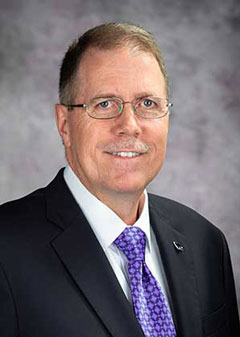July 27, 2021
Preparing for the fall 2021 academic experience

Dear colleagues,
As the fall 2021 semester approaches and we prepare to return to campus, I have been thinking about ways to support the success of our faculty, staff and students.
Since March 2020, our faculty and staff have taken extraordinary measures to continue our academic mission. Your efforts to maintain research, scholarly and creative activities and discovery (RSCAD) productivity, prepare facilities and take safety measures to navigate teaching during the pandemic, and serve our students and community at large continue to impress.
Throughout the pandemic, I have appreciated the many ways faculty have adjusted courses, teaching modalities, and student research and other experiential learning experiences to meet the needs of our students and keep our communities safe. By following our guidance to be flexible and empathetic, instructors maintained the spirit of excellence and care that characterizes a K-State education throughout one of the most difficult and challenging moments in our history.
Moving into the fall 2021 semester, we need to be mindful that even with our herculean efforts to ensure their learning, our students may need intentional supports to recall and implement the skills and knowledge we taught since the beginning of the pandemic. Consistent with national reporting, our students report uneven confidence in their ability to successfully advance in their coursework after the 2020-21 academic year. This perception is rooted in their varied experiences with remote learning, but these sensed gaps in knowledge may affect learning in the fall.
The following is a reminder of some pedagogical practices we can implement to support student success moving into the 2021-2022 academic year:
- Consult with colleagues: Faculty teaching sequenced courses may consult about any areas in prerequisite or general courses that may need additional coverage. If assessment data indicates a particular learning outcome needs more attention across the board, alerting the instructors of the next course sequence can lead to better outcomes for all students.
- Review content: To ensure students have a strong foundation on which to build, consider opening the first week with a review of important skills or knowledge that is crucial to their success. If that is not possible within your course design, send a note before the semester begins reminding students of key items to refresh, with links to study aids.
- Pre-assessment and tutorials: If accessing insights from colleagues is difficult, consider taking an in-class poll about student confidence in their preparation for your course or giving an ungraded assessment to evaluate students on their preparation. Consider working with Tutoring Services to ensure a peer tutor is available to provide additional support to your students, achievement@k-state.edu.
To deliver on our commitment to teaching excellence we need to meet students where they are, set high expectations for their learning, and provide needed support for learning. Visit the Teaching and Learning Center website for additional resources and to engage with the professional development series.
Over the next several weeks, look for updates and guidance to support a mindful, safe and productive return to campus.
Thank you for helping K-State students meet their academic goals and for keeping #kstatestrong.
Sincerely,
Chuck Taber
Provost and executive vice president
